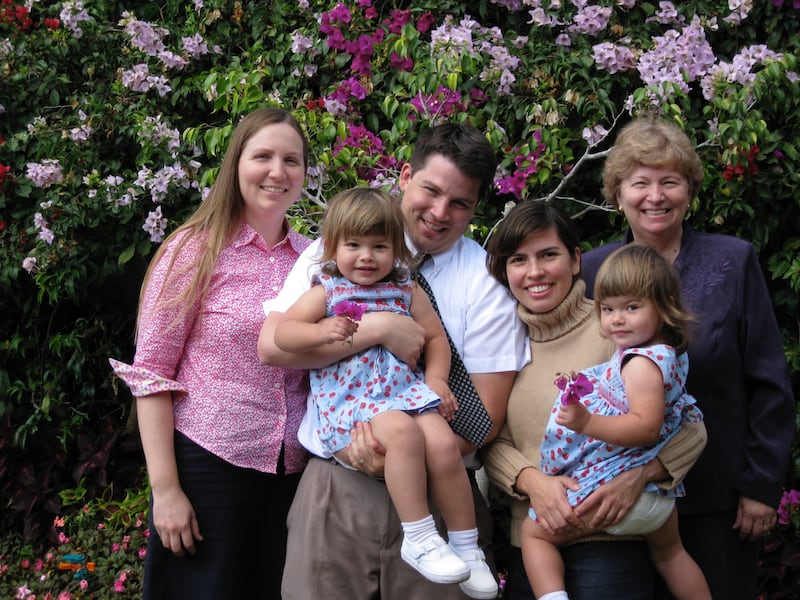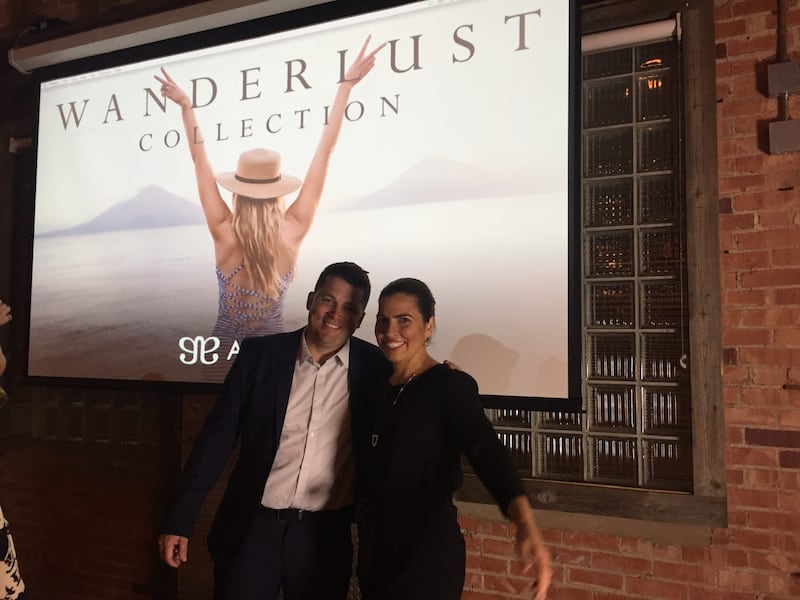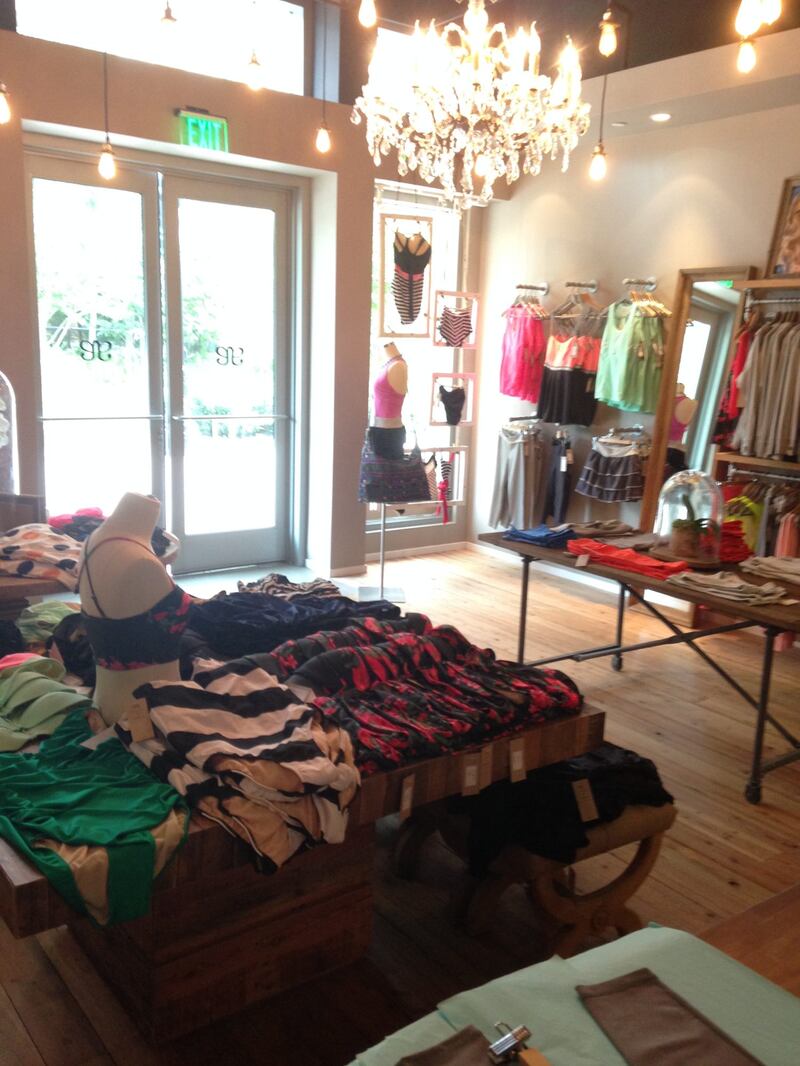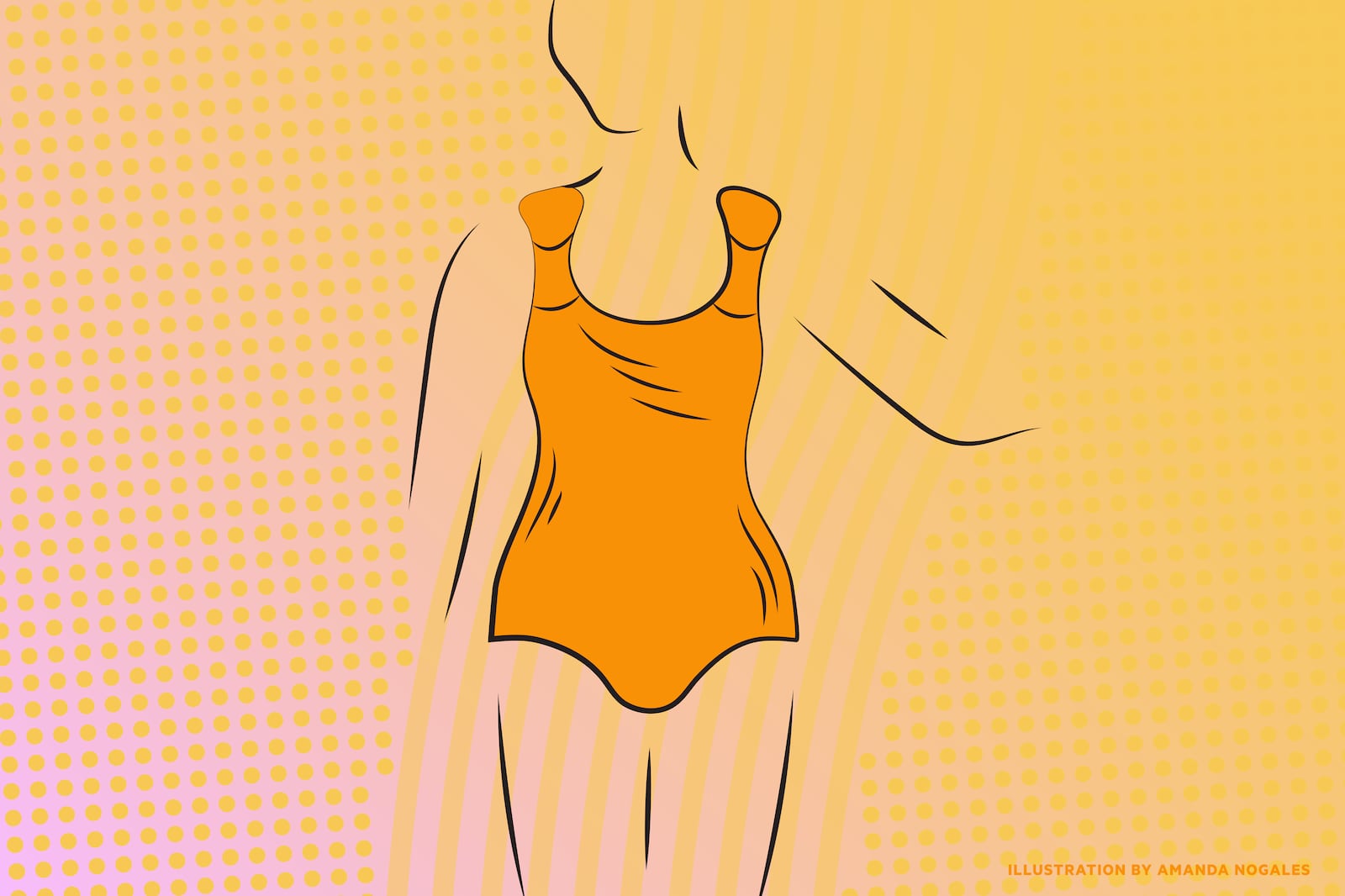The Founder Series is a weekly column by and about Utah founders and how they got to where they are today. Click here to read past articles in the series.
In 1988, I was 8 years old and came home to an unexpected “For Sale” sign in front of our home in sunny Sherman Oaks, CA. My dad thought our family needed an “international experience” and within 7 days our home was sold, movers came, and our family was packed in a Jeep headed on a three-week drive to Guatemala.
“Don’t worry kids! It’ll be an adventure!”
Moving to Guatemala wasn’t a completely random decision. My mom was, in fact, Guatemalan. We’d visited only a couple of times, and none of us (including my dad) spoke Spanish. But after a particularly difficult day at work, my dad decided to retire at the age of 45 and Guatemala checked off all the boxes for his next phase. The US dollar was strong, the golf was good, and Maya ruins would fill our weekends. So off we went!
But after a year, my dad needed more to fill his days. He bought my mom a small sewing “taller,” or sewing boutique, to keep her “happy and busy” as they created small orders for the local markets.
Fast forward 10 years and my parents had grown this little hobby boutique into a thriving business with clients that included Nike, Reebok, Vanity Fair, Victoria’s Secret, and more. Like most businesses, there were ebbs and flows—some great years and some difficult ones. But my parents were a successful team in one of the most demanding industries in the world. Their work ethic left a lasting impact on me, especially when my husband, Dave and I would found our own company some years later.
Dave and I met while working in a law firm copy room while we attended the University of Utah, where I was pursuing an English degree and Dave was studying graphic design. I was interested in law and thought I’d get a good taste of what attorney life would be like by working at a firm. Instead, I decided I absolutely did NOT want to be a lawyer, but I did absolutely fall madly in love with the cute boy with bright blue eyes who played rugby on the weekends.
We were married three years later and moved to San Diego in 2003 where I started a Ph.D. program in Literature at UCSD. We were currently on Plan B—instead of practicing law, I aimed to be a professor. Dave had a great job as a graphic designer at a jewelry business in La Jolla and life was good. We lived by the beach and enjoyed newlywed bliss without a care in the world for 3 years and then reality hit. Within a year, Dave and I found out that we were expecting twins, my mom was diagnosed with stage 4 breast cancer, and the economy was starting to shift. It was 2006 and the darkest, most difficult times of our lives were looming ahead.

Back to Guatemala
My dad needed help at the factory and I needed help with the twins to finish up my degree so my parents offered Dave a job in Guatemala to learn the family business. Truthfully, we knew my family’s business was struggling when we moved down but it was about to get a lot worse in just a matter of months.
My parents had over 1000 employees with factories in two countries and customers they’d worked with for 25 years. However, all of that would change in 2007 when manufacturing quotas in China were lifted. Seemingly overnight, all our work moved East where labor was significantly cheaper. The writing was on the wall when our customers asked to videotape our sewing team to send visual aids to their new factories in China.
Dave’s role quickly transitioned to finding new customers. Our team specialized in high minute, technically difficult, high quality swims and fitness apparel—not mass-produced, basic t-shirts which were all that was available. We were desperate for work and took orders we knew would just barely keep us afloat, even at a loss, hoping to keep our doors open long enough to find that unicorn customer who needed what we thrived at creating.
We had thousands of people depending on us to keep food on their tables. Dozens of factories were closing every week with hundreds of thousands showing up for payday only to find the warehouses vacated overnight and owners nowhere to be found. There were no jobs and crime was rampant. Armed guards were brought in by the clients to protect their merchandise. My family tried desperately to keep work in the lines. But we could only continue to operate at a loss for so long, and things worsened every day.
Over the next 18 months, we went from over 1000 employees to just 25. My parents closed all their factory doors, sold machines to cover severance, and emptied their retirement. Dave and I put tens of thousands of dollars on our credit cards to help cover payroll. Somehow in the midst of this crisis, Dave still had hope for the future and had the idea to find a small warehouse where we could put a couple of dozen highly trained sewers, our best production and quality managers, our head of cutting, and logistics. It would be the foundation we’d build on if we could hold on just a little longer.
It wasn’t the prettiest warehouse and it was in one of the worst parts of town, but it served its purpose. Dave found a client who was willing to pay more for the high-quality craftsmanship our team could offer. The margins were significantly better but we had to provide the materials ourselves, so it also meant that we needed capital. We bootstrapped with the help of our dear friend, American Express, and charged every single expense, accepting a late fee when we needed a buffer.
The orders were small, too small for any other factory. But for us, they were perfect, they were manageable, required just the amount of capital we could find, and maybe most importantly, the client loved us. Things were going well, until one early morning, when we found out that someone had broken into the warehouse and stolen every single machine. As if things couldn’t get worse, we had an incomplete order that needed to be shipped the next day. We needed that payment not just to buy more fabric and zippers, or to make payroll—we needed it to buy groceries.
If you were to ask me, or Dave, or anyone on our team then, this day was a defining moment in our lives. As we walked into the warehouse, I looked up at the words we had painted on our walls.
“Cada dia mejor.”
Every day a little better. The words stung with the realization that each day over the past three years had only gotten progressively worse. We just couldn’t catch a break. We were working tirelessly not just for ourselves and for our family, but for my parents, and our factory team. The burden of that responsibility was suffocating and almost too much to bear. When I finally saw that empty factory floor, I realized it was the end. There was truly nothing else we could do. In a way, as tragic and futile as that reality was, it was also a relief. We had done all we could do. It was time to go back home to Salt Lake and start over.
And yet, for my dad and for Dave, it wasn’t the end. With Dave’s encouragement, my dad picked up the phone and called any friends who still had factories open and asked for help. Hours later, trucks arrived with all the machines we needed. Our mechanic set them up, and one by one, they finished the order.
That night, Dave picked up a pencil and drew up some logos. The goal? To control our own destiny. We were going to create our own apparel line so we’d never have to sew for another client again.
Founding Albion
Though a devastating loss, the timing of the theft was perfect. A childhood friend of mine had an online dress company called Shabby Apple. At first, we were just fulfilling small orders but that soon developed into us designing a handful of dresses for Shabby Apple that we’d sell on consignment. Eventually, we designed a fitness and swim line and asked if we could sell it on their site under our own label. They kindly agreed, and the first Albion store was founded—named after Albion Basin where Dave proposed.
Our fitness line did well but it was our swimsuits that set us apart, specifically our one-pieces. As a new mother, I wanted to play at the pool with my kids and not worry about tugging and pulling at my swimsuit to stay in place. I also wanted to feel confident and beautiful. Apparently, I wasn’t the only one looking for that suit.
We had stumbled upon a niche market that solved a problem for millions of women. Our one-piece swimsuits stood out from the competition with bright colors and patterns, as well as catchy names like “The Showstopper” and “The Head-turner.” Our suits were sophisticated, timeless, and feminine. They were appealing to young moms, who were all tired of the same frumpy and boring options year after year.
Albion grew slowly but steadily over the next year, and the swims led the way. We still needed to sew for other clients to keep our lines busy, but Albion was showing promise.
Dave and I moved back to Utah in 2010 when we realized Guatemala couldn’t offer our family what we needed in terms of education and security. Although we loved Guatemala, it wasn’t the States. We purchased the factory from my parents before we left and hoped finding clients would be easier if we lived in the US.
One afternoon back in the States, a friend mentioned to us that a new shopping center was being built in downtown Salt Lake and they were looking for a local fitness company to fill a space for their grand opening. We decided to check it out.

Albion’s first home in person and online
I was surprised that City Creek offered us a lease but I’m even more surprised that Dave and I signed it. We had zero experience in retail and a very small product offering. We were in the middle of recession and retail had been declared “dead.” We also had no money and no idea how to get more, aside from our credit cards. But it seemed like an adventure and like just the kind of opportunity that wouldn’t come around twice, we couldn’t say no.
We spent a whopping $15,000 on the buildout (thanks again, Amex!) and put together some dazzling window displays with tennis balls hanging from fish wire. We hired 3 stylists and brought in just enough revenue to cover the bills. It was a full-time job on top of our other full-time job, but I loved meeting our customers and showing them our product.
Four months later, we had to decide if we wanted to sign a permanent lease at the mall. Truthfully, we were breaking even or maybe making a small profit but it was in no way enough to justify committing to a long-term contract we’d have to personally guarantee. The lease was much more expensive this round and we’d have to move to a smaller location that still required a full build-out. It would be a sizable investment for us, in terms of time and money. And yet, customers were coming and coming back with friends and family in tow.
Dave and I struggled to make a decision and turned to friends and family for advice and some heartfelt prayer. It came down to the night before we had to sign the LOI and our answer finally came. We got a phone call from one of our store girls and it went something like this: “Liz, Dave, you’ll never believe this. Someone just came into the store and spent $1000! His name was Albion. And his son’s name was Findlay!”
And that was that. We signed the papers the next day on our first permanent location.
Eager to expand into E-commerce, Dave once again rolled up his design sleeves and built our first website. Our site went live on January 1, 2011, and within a few hours, we generated more revenue than was normal for a week in store. We couldn’t believe things had gone so well.
On April 1, 2012, we opened our doors for our first permanent location, all 607 square feet of it. Did I mention it was just steps from where Dave and I met in the copy room? The space was small but we preferred calling it “intimate.” We designed the space to feel like a home. We used oak dining tables and tufted ottomans for our furniture. Reclaimed wood floors were paired with industrial shelving and a beautiful chandelier that I hoped one day we could afford for our own home.
Orders continued to increase that year and keeping up with production demand was beginning to take its toll. We were still sewing for other companies and there was a large order due in November that demanded all our resources. That meant our shelves would be empty for the holidays. It was then that we decided it was time to go all in. We stopped sewing for other businesses and our sewing lines would exclusively sew for Albion moving forward.
It took three years but we made it happen. Our future was finally in our hands, just how we hoped it would be.

Finding our people
Our strategy didn’t look like your typical start-up. We didn’t have a formal business plan. We didn’t have financials or any forecasting or modeling to help us make important decisions. We carefully watched our bank account and as Dave always said, “If they zigged, we zagged.” We leaned on Dave’s design aesthetic, our factory’s experience, and local outreach.
We also experimented with a then-little-known social app, where people posted pretty pictures with witty captions below: Instagram.
The timing for our launch on the app couldn’t have been better. Big corps had made huge cuts to their marketing budgets and customers were looking to be wowed. In 2011, Instagram didn’t have official “influencers” yet, at least that’s not what they were called. Most women with large followings (25k-100k followers) at that time were bloggers who had crossed over to Instagram to bring traffic to their website. We were one of the first companies to reach out to these bloggers and offer them product in exchange for a post and review.
Building this online community was critical to gaining a national presence. Within a couple of years, Instagram brought us into the homes of hundreds of thousands of women we would have never been able to reach otherwise. This viral exposure would be key to opening store locations outside of Utah and becoming a national brand.
We love having stores. We love the face-to-face interaction with our customers. We love the instant feedback, the relationships we build, and the community ties we establish. We didn’t have the marketing budgets back then that our competitors had, so we had to be creative in our outreach, and our stores provided that opportunity.
Instead of traditional media like TV or print, we leaned into grassroots efforts, reaching out to local businesses and schools. We designed custom tennis outfits for the high schools. We sponsored local races by designing technical shirts that people actually wanted to wear after the race. One of our most popular initiatives was our “Crafting and Cuisines.” We’d hire local chefs to come into the store while a local artisan would teach us a craft. It was the perfect Girls Night Out and an opportunity for us to make these women feel comfortable and at home in our little space.
Testing resilience
Our purpose at Albion has ultimately very little to do with what we are selling and everything to do with how we make people feel. The clothes are just a vehicle in creating an atmosphere that’s positive and authentic. I’ll be the first to say that we make great swimsuits—you’ll get compliments from strangers every time you wear them. But as much as I’d like to give all the credit to our designs and fit, I know there’s more. Women know when they wear an Albion suit they are free to adventure and make memories with people they love because the last thing they have to worry about is if they look good in that suit. Because that’s a given.
These days, the growing pains Dave and I face look very different than they did ten years ago. We survived Covid without having to furlough or let go of a single employee or reduce hours. When the world stopped right before spring break 2020, our high season, we pivoted from swims to leisure overnight and rode the wave of comfort-wear at home. When all four of our stores were closed indefinitely due to quarantines and our online orders quadrupled overnight, our team went to work, fulfilling every order with courage and determination at a time that, truthfully, was very scary for all of us. We weren’t going to give up then, just as we didn’t give up all those years ago in Guatemala and all those hopeless moments in between.
And that’s what hardships do, right? Those struggles, that doubt, that sense of desperation, it just increases our tolerance for whatever future hardships await us. We can look back on those days and remember who stood by us, who helped us when it seemed like all hope was lost, who believed in us and how we had to believe in ourselves in order to survive. Those moments teach us that sometimes, all we have to do is just show up. Those three words are framed in big bold letters on our walls at our headquarters:
We. Show. Up.
It’s a reminder that challenges are just opportunities in disguise if we’re willing to do hard things.
This spring marks ten years since we opened our doors at City Creek Center and our sixth store, in Austin, opens in March. Just three months ago, we opened our fifth in San Diego, a block from where Dave and I brought the twins home from the hospital in 2005. I think if that version of Dave and Liz from back then could catch just a glimpse of what our lives looked like today, we wouldn’t believe it. Not a single thing we had planned for or hoped for happened and yet we would be so proud of what we built and who we built it with because we didn’t give up.
We can’t wait to see what’s next.

